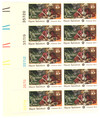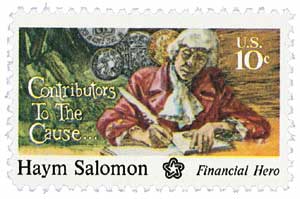
# 1561 - 1975 10c Contributors to the Cause: Haym Salomon
1975 10¢ Haym Salomon
Contributors to the Cause Series
City: Chicago, Illinois
Quantity: 166,810,000
Birth Of Haym Salomon
As a young man, Salomon traveled throughout Western Europe and learned a great deal about finance and other languages. He returned home to Poland in 1770, and spent some time in England before immigrating to the US in 1775.
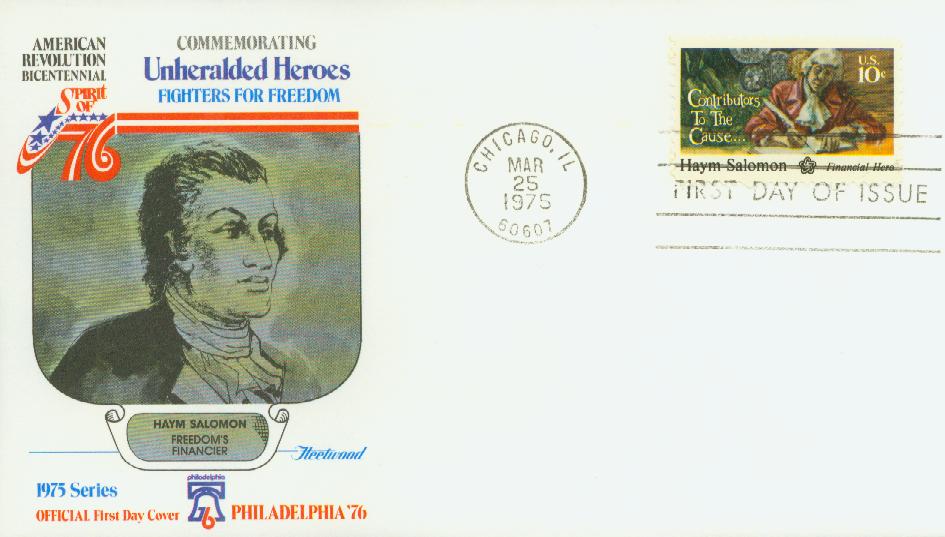
In New York City, Salomon found great success as a financial broker for merchants conducting overseas trade. Salomon sympathized with the Patriot cause in America and joined the Sons of Liberty. However, in September 1776, he was arrested by the British for being a spy. They pardoned him, but forced him to stay on a British ship for 18 months interpreting for the Hessian (German) soldiers. Salomon complied, but also used this time to free some of the American prisoners on the ship and encouraged the Hessians to abandon their support of the British. Salomon was released but arrested again in 1778. He was sentenced to death, but was able to escape by bribing a jailer.
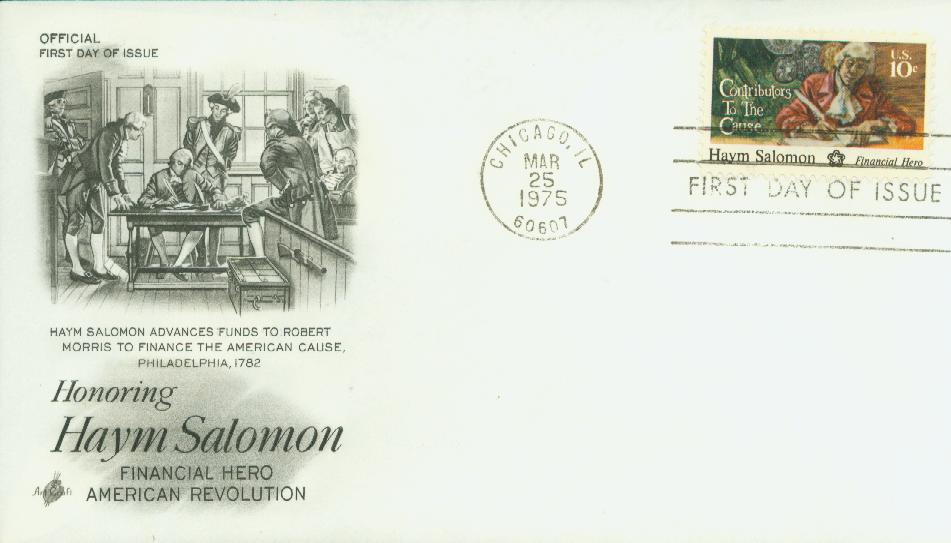
Salomon then made his way to Philadelphia and resumed his work as a broker. He soon became the agent to the French consul and the paymaster for the French forces in America. And in 1781, Salomon started working with Robert Morris, the Superintendent of Finance.
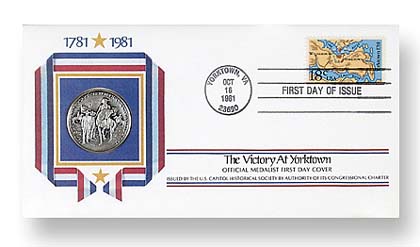
Later that year, George Washington had trapped British Lieutenant General Charles Cornwallis at Yorktown. However, he was unable to launch the battle because he and Congress didn’t have enough money to provide food, uniforms, or supplies for the troops to carry it out. Washington estimated he’d need $20,000 to cover these costs. When Morris told him they didn’t have the funds, Washington replied, “Send for Haym Salomon.” And Salomon quickly raised the $20,000 by selling bills of exchange, enabling Washington to lead the successful Battle of Yorktown.
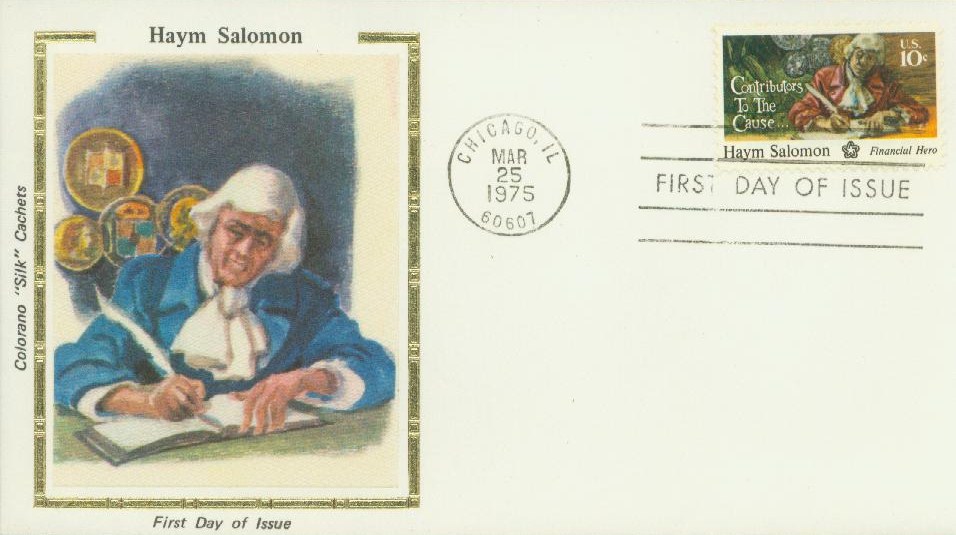
Salomon was able to keep the war effort funded largely by selling bills of exchange to American merchants for their dealings with France and the Dutch Republic. He also offered low-interest loans to members of the Continental Congress and never asked that they be repaid. Salomon also gave money to people that he considered were unsung heroes of the war. One of these people was Bodo Otto, a surgeon for the Continental Army. Otto had established a hospital at Valley Forge and used his own money to buy medical supplies. After the war, Salomon gave him the money to reestablish his medical practice in Reading, Pennsylvania.
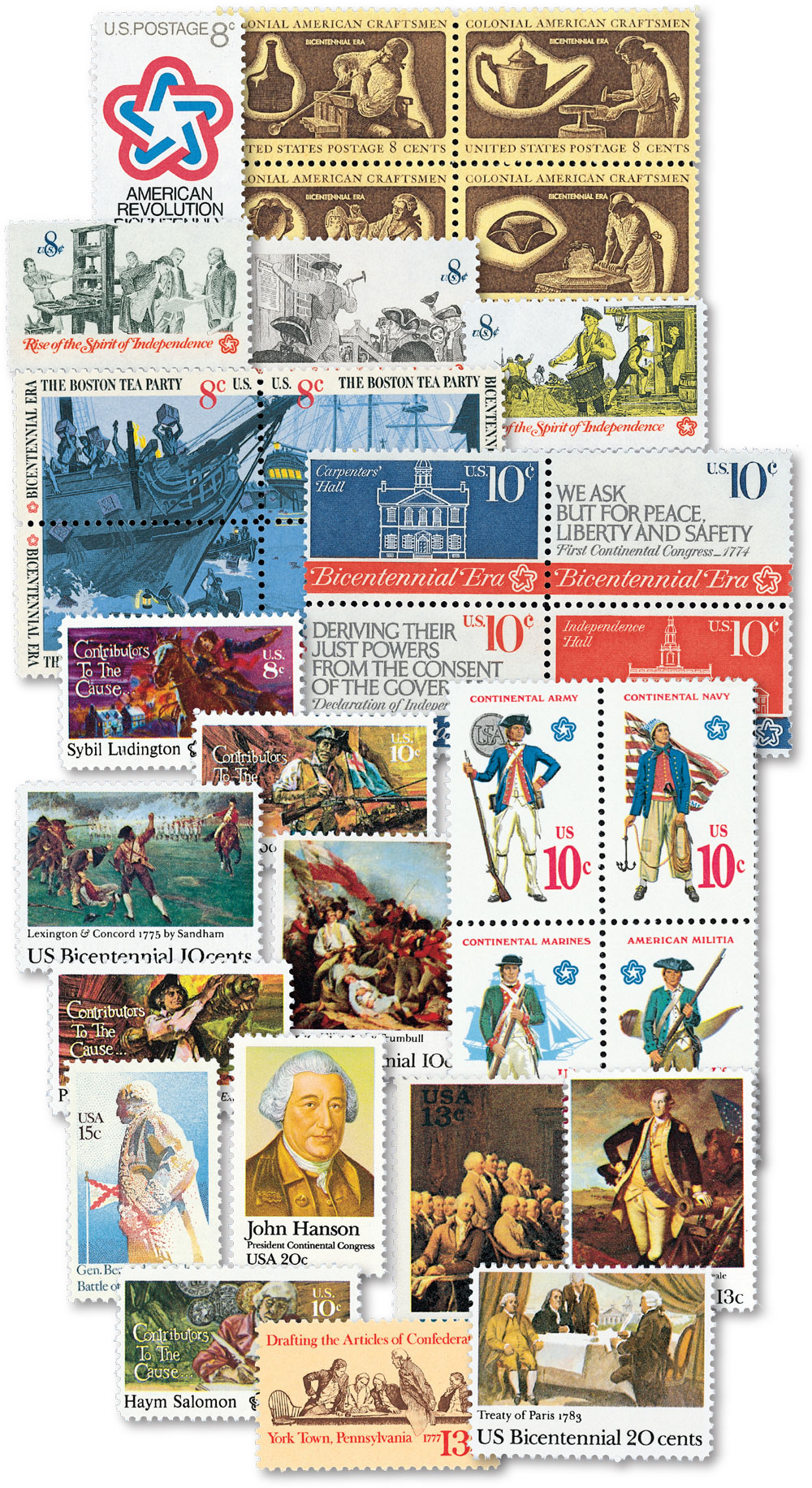
Between 1781 and 1784, Salomon contributed a great deal of his own fortune to the American cause. He also conducted extensive fundraising – providing more than $650,000 (more than $338 million in today’s dollars) to the American war effort.
After the war, Salomon continued to contribute his own money to the fledgling nation. He also fought to overturn laws that restricted Jewish citizens like himself. Most notably, he successfully pushed for the Pennsylvania Council of Censors to remove the religious oath that was required for taking office. Salomon died on January 8, 1785 from tuberculosis that he had contracted in prison. He died in poverty, having given all of his fortune to the American war effort.
Several places are named in his honor as well as a World War II Liberty Ship. He is also honored in the Heald Square Monument in Chicago as part of the sculpture Triumvirate of the Patriots. The triumvirate consists of the figures of Robert Morris, Haym Salmon, and George Washington.
1975 10¢ Haym Salomon
Contributors to the Cause Series
City: Chicago, Illinois
Quantity: 166,810,000
Birth Of Haym Salomon
As a young man, Salomon traveled throughout Western Europe and learned a great deal about finance and other languages. He returned home to Poland in 1770, and spent some time in England before immigrating to the US in 1775.

In New York City, Salomon found great success as a financial broker for merchants conducting overseas trade. Salomon sympathized with the Patriot cause in America and joined the Sons of Liberty. However, in September 1776, he was arrested by the British for being a spy. They pardoned him, but forced him to stay on a British ship for 18 months interpreting for the Hessian (German) soldiers. Salomon complied, but also used this time to free some of the American prisoners on the ship and encouraged the Hessians to abandon their support of the British. Salomon was released but arrested again in 1778. He was sentenced to death, but was able to escape by bribing a jailer.

Salomon then made his way to Philadelphia and resumed his work as a broker. He soon became the agent to the French consul and the paymaster for the French forces in America. And in 1781, Salomon started working with Robert Morris, the Superintendent of Finance.

Later that year, George Washington had trapped British Lieutenant General Charles Cornwallis at Yorktown. However, he was unable to launch the battle because he and Congress didn’t have enough money to provide food, uniforms, or supplies for the troops to carry it out. Washington estimated he’d need $20,000 to cover these costs. When Morris told him they didn’t have the funds, Washington replied, “Send for Haym Salomon.” And Salomon quickly raised the $20,000 by selling bills of exchange, enabling Washington to lead the successful Battle of Yorktown.

Salomon was able to keep the war effort funded largely by selling bills of exchange to American merchants for their dealings with France and the Dutch Republic. He also offered low-interest loans to members of the Continental Congress and never asked that they be repaid. Salomon also gave money to people that he considered were unsung heroes of the war. One of these people was Bodo Otto, a surgeon for the Continental Army. Otto had established a hospital at Valley Forge and used his own money to buy medical supplies. After the war, Salomon gave him the money to reestablish his medical practice in Reading, Pennsylvania.

Between 1781 and 1784, Salomon contributed a great deal of his own fortune to the American cause. He also conducted extensive fundraising – providing more than $650,000 (more than $338 million in today’s dollars) to the American war effort.
After the war, Salomon continued to contribute his own money to the fledgling nation. He also fought to overturn laws that restricted Jewish citizens like himself. Most notably, he successfully pushed for the Pennsylvania Council of Censors to remove the religious oath that was required for taking office. Salomon died on January 8, 1785 from tuberculosis that he had contracted in prison. He died in poverty, having given all of his fortune to the American war effort.
Several places are named in his honor as well as a World War II Liberty Ship. He is also honored in the Heald Square Monument in Chicago as part of the sculpture Triumvirate of the Patriots. The triumvirate consists of the figures of Robert Morris, Haym Salmon, and George Washington.




